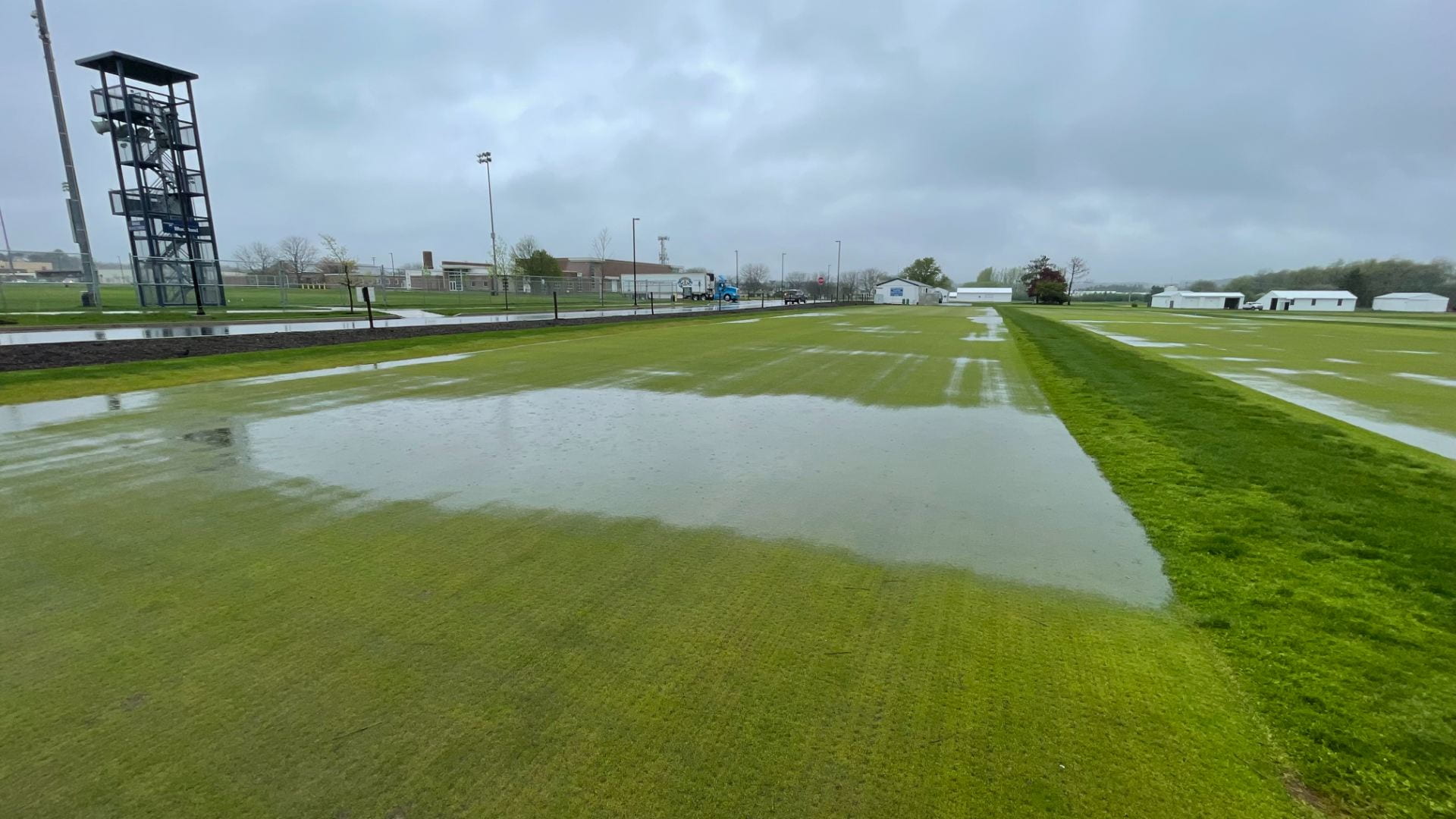
Colder temps and rain
This spring has seemed to be never ending for turfgrass managers in Pennsylvania and the surrounding regions, but we may be finally getting into some better growing conditions. While many have been battling winterkill caused by some early warm temperatures followed by some deep freezes, it seems that things are starting to look up around the state.
Last week we experienced some persistent rain that placed itself over much of central and eastern Pennsylvania. Relatively cool temperatures meant that the grasses were not growing much and the excessive rain caused some minor headaches. At the Valentine Research Facility, our plots were under water for a period of time. According to Dr. McGraw, the heavy rains also resulted in a massive emergence of the marsh crane fly in central PA.
Diseases developing just south of us
A quick trip to visit Dr. Fereshteh Shahoveisi, the new turfgrass pathologist at the University of Maryland, made me realize just how much of a difference a couple hundred miles south can make on pests. Dollar spot has been active in the Washington, D.C. area for about 3-4 weeks already and they were also experiencing some spring dead spot and large patch damage on bermudagrass and the excessive moisture likely isn’t helping things. Take all patch on newly established bentgrass has also been reported.
Short term outlook
Looking at this week’s weather forecast for Pennsylvania, it looks like much of the state will be in the mid 70s to low 80s with scattered showers. Those of you in warmer areas may need to be on the lookout for dollar spot, but the cooler areas might be a couple of weeks away. As always, the moisture and relatively mild temperatures should have you on the lookout for a variety of early spring diseases including brown ring patch, cool temperature brown patch, and even Microdochium patch. We’re still a few weeks away from the thick of it, but so far this year is looking like it will be a pretty active disease season.
Sending samples
If you have any issues that require a look, don’t hesitate to give us a call. We are happy to take a look at any samples you would like to have diagnosed. It’s always best to have a positive ID to ensure that your management strategies are targeting the right pests.
After two days of heavy rainfall in State College, we have the marsh crane fly (T. oleracea) emerging en masse pic.twitter.com/EubZCMcT6V
— Ben McGraw, PhD (@TurfEnto) May 8, 2022
